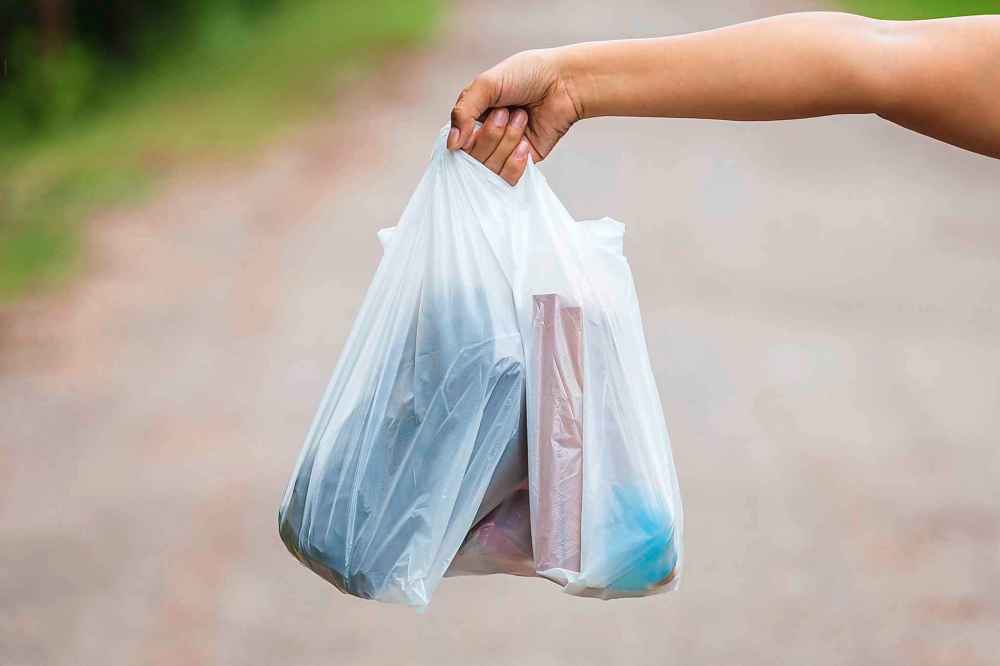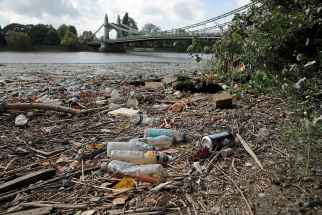Study finds microplastics in people Particles entering ecosystem from breakdown of debris in the environment
Read this article for free:
or
Already have an account? Log in here »
To continue reading, please subscribe:
Monthly Digital Subscription
$0 for the first 4 weeks*
- Enjoy unlimited reading on winnipegfreepress.com
- Read the E-Edition, our digital replica newspaper
- Access News Break, our award-winning app
- Play interactive puzzles
*No charge for 4 weeks then price increases to the regular rate of $19.00 plus GST every four weeks. Offer available to new and qualified returning subscribers only. Cancel any time.
Monthly Digital Subscription
$4.75/week*
- Enjoy unlimited reading on winnipegfreepress.com
- Read the E-Edition, our digital replica newspaper
- Access News Break, our award-winning app
- Play interactive puzzles
*Billed as $19 plus GST every four weeks. Cancel any time.
To continue reading, please subscribe:
Add Free Press access to your Brandon Sun subscription for only an additional
$1 for the first 4 weeks*
*Your next subscription payment will increase by $1.00 and you will be charged $16.99 plus GST for four weeks. After four weeks, your payment will increase to $23.99 plus GST every four weeks.
Read unlimited articles for free today:
or
Already have an account? Log in here »
Hey there, time traveller!
This article was published 14/11/2018 (2602 days ago), so information in it may no longer be current.
There’s been much discussion in Manitoba about the plastic we use. Until now, there’s been no discussion about the plastic we unwittingly eat.
Scientists presented research recently at the annual United European Gastroenterology conference that shows, to use a term that is decidedly unscientific, there is plastic in the poop.
Granted, the study was small and hasn’t yet been peer-reviewed. Researchers from the University of Vienna monitored the stools of eight people from eight different countries. All contained microplastic particles, a total of nine different types.

“This is the first study of its kind, and confirms what we have long suspected, that plastics ultimately reach the human gut,” said lead researcher Philipp Schwabl, a physician scientist.
How much plastic had the people unknowingly ingested? On average, every 10 grams of excrement contained 20 particles of microplastic. Microplastics are less than five millimetres long, barely visible to the human eye.
From where do microplastics come? They enter natural ecosystems from many sources such as cosmetics, fibres from synthetic clothing and industrial waste. Most microplastics come from the breakdown of debris such as plastic bottles and plastic straws that degrade once they enter the environment.
Is it harmful for people to eat microplastics? Scientists don’t know for sure, but research in birds and aquatic life which have ingested microplastics has shown potential damage to their reproductive system, and the liver. Research is underway into microplastics’ effects on humans.
Reacting to the study that for the first time established microplastics in human feces, researchers stressed the need to increase recycling of plastic and reduce plastic use.
Manitoba has already made considerable progress in reducing the use of plastic bags, according to statistics from Multi-Material Stewardship Manitoba. That group estimates the single use of plastic bags has fallen by more than 70 per cent in the past decade, thanks in part to plastic-bag recycling bins, stores that charge a fee for plastic bags and a campaign that encouraged people to reduce, reuse and recycle.
There was considerable debate in Winnipeg last summer about a proposal to ban single-use plastic bags in the city. The proposal got as far as Winnipeg’s water and waste committee, where it sat before the municipal election on Oct. 24. It’s unlikely to find immediate traction because the councillor in charge of the motion, Russ Wyatt, did not run for re-election.
Mircoplastics are about more than plastic bags, though. They’re ubiquitous. Plastic fibres can also come from household carpeting, synthetic clothing and plastic food packaging. They’re prevalent in the food chain, being found in insects, birds, fish and mammals.
While it seems almost impossible for humans to avoid microplastics altogether, the realistic and responsible action is to choose alternatives to plastic when possible, including reusable bags, reusable bottles and consumer goods that avoid plastic packaging.
The big question about microplastics is the health ramifications to humans. It’s something to think about as we dine on food that may contain microplastics.
The mounds of plastic we have disposed of in our life-time have broken down into bits of microplastic and are returning to us through natural ecosystems. In essence, we’re eating our garbage, which is disturbing food for thought.









